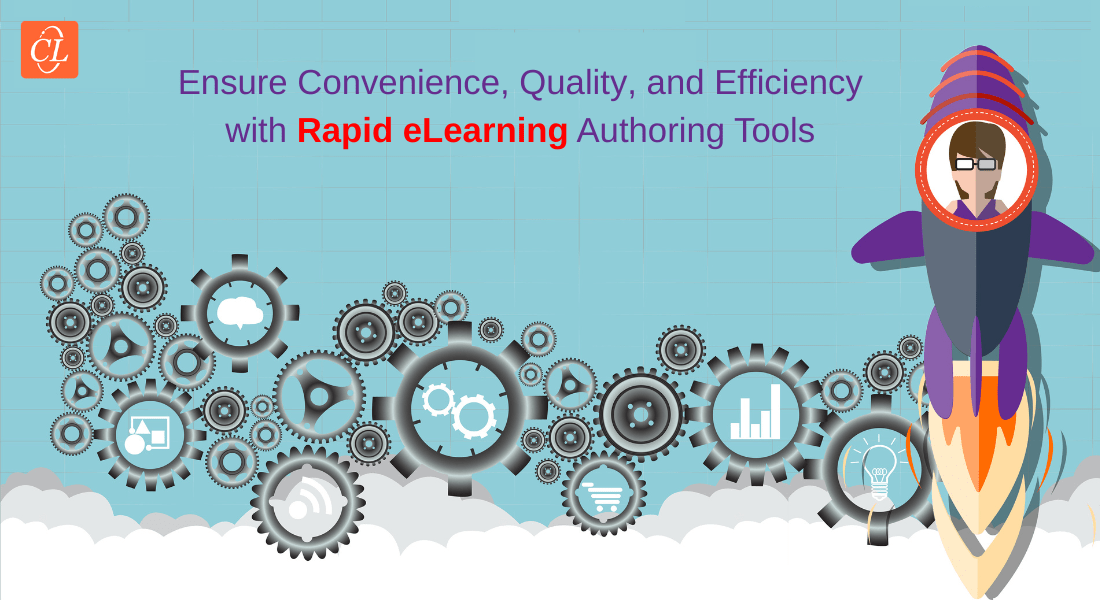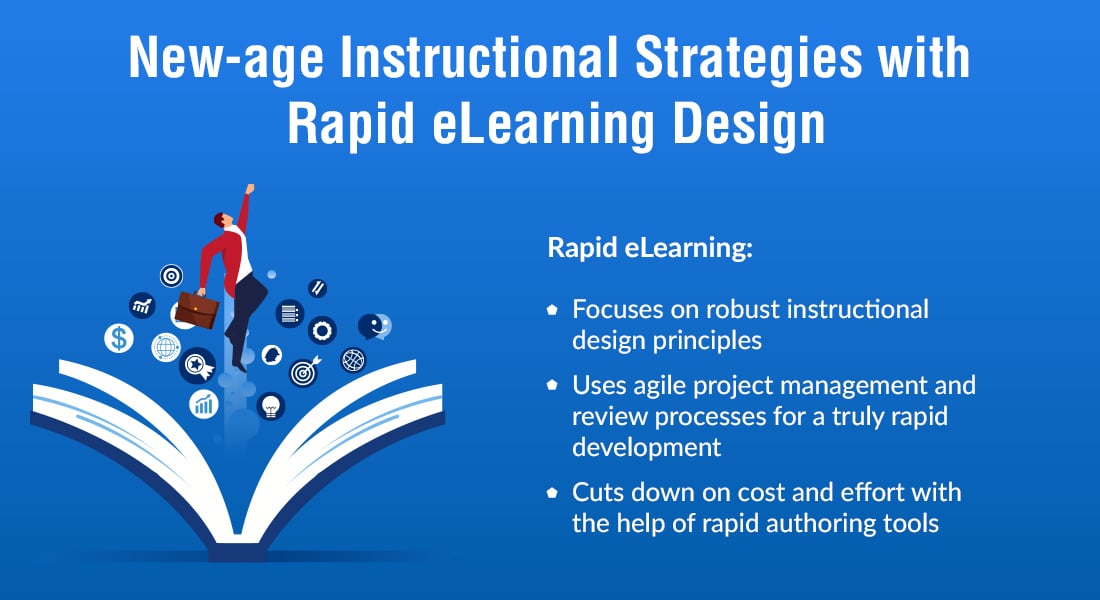How to Maximize Efficiency in Rapid eLearning? [ 5 Tips for Fast Delivery]
![How to Maximize Efficiency in Rapid eLearning? [ 5 Tips for Fast Delivery] How to Maximize Efficiency in Rapid eLearning? [ 5 Tips for Fast Delivery]](https://blog.commlabindia.com/hubfs/Imported_Blog_Media/rapid-elearning-tips-maximize-efficiency.png)
Are you worried that you might sacrifice quality for speed when it comes to delivering your eLearning content? I know that in today’s fast-paced business world, time is of the essence. But fast delivery of training courses without efficiency is definitely something to refrain from! Why? You might ask. It’s because eLearning modules designed and developed in such a matter can result in subpar training outcomes and disengaged learners. Don’t worry! Rapid eLearning can save you from all this trouble.
Make Speed and Efficiency Go Hand-in-hand With Rapid eLearning!
Here’s a list of 5 tips to help you do so:
- Use rapid eLearning authoring tools
- Create a style guide
- Use rapid prototyping
- Leverage pre-built templates and themes
- Implement iterative review process
That’s why I’m here to share some valuable tips and tricks on how you can maximize efficiency in rapid eLearning. These tips and tricks will help you deliver high-quality training content at lightning speed, without compromising on effectiveness.
So buckle up, and let’s get started on the journey to faster, more efficient eLearning delivery!
5 Tips to Maximize Efficiency in Rapid eLearning
Are you ready to deliver rapid eLearning like a pro? Here’s how:
Use Rapid eLearning Authoring Tools
The first step to maximizing efficiency in rapid eLearning is to use the right authoring tools. Rapid eLearning authoring tools such as Articulate Storyline, Adobe Captivate, iSpring, Lectora, etc., are specifically designed to speed up the eLearning development process without compromising the quality.
→ Get Your Copy Now: Rapid eLearning Design for Quick Rollout
With a range of ready-to-use templates, themes, pre-built interactivities, a media library, and even assessments, they help you save hours of development time. Moreover, rapid eLearning authoring tools enable you can easily customize your eLearning courses as per your requirement.

Create a Style Guide
A style guide is another important element to ensure efficiency in rapid eLearning as it helps you maintain consistency across all your eLearning courses. From guidelines for fonts and colors to graphics and layout, a style covers it all.
Therefore, by creating a style guide, you can eliminate the need to make decisions on the fly and focus on one single task, thereby saving you from distractions. It also ensures that your eLearning courses look professional and visually appealing.
Use Rapid Prototyping
The rapid prototyping technique involves creating a quick and dirty prototype of your eLearning course before developing the final version, which can save you a lot of time and effort. This technique allows you to test your ideas and get feedback from stakeholders early on in the development process.
By doing so, you can identify any potential issues and make necessary changes before investing a lot of time and resources in the final product. With rapid prototyping, you can ensure that your eLearning course meets the needs of your learners and stakeholders while maximizing efficiency in the development process.
Leverage Pre-Built Templates and Themes
Using templates and themes are a great choice to design and develop eLearning content quickly and easily. With that said, rapid eLearning authoring tools can be a game-changer as they offer you a range of pre-built templates and themes and enable you to create high-quality eLearning courses.
Along with that, you can easily customize the ready-to-use templates and designs to fit your specific needs. Clearly, you can save yourself a significant amount of time and effort by leveraging pre-built templates as you don’t have to start from the scratch.
Implement Iterative Review Process
One of the biggest bottlenecks in rapid eLearning development is the review and feedback process. To overcome this challenge, you can implement rapid review cycles. Instead of designing and developing the entire eLearning course, sharing with the stakeholder, and then waiting for the feedback, you can incorporate the Successive Approximation Model (SAM) in rapid eLearning.
This method follows the iterative approach for each phase beforing moving on the next phase of eLearning design and development. Therefore, it ensures that you’re on the right track from the very beginning. Moreover, incorporating feedback becomes easy and effective which saves time and produces desirable results.
Wrapping It Up!
Maximizing efficiency in rapid eLearning is all about knowing the right tips and techniques, and implementing them correctly. As we’ve already discussed the 5 tips to maximize efficiency in rapid eLearning, you can now easily streamline your rapid eLearning development process and deliver high-quality eLearning content faster than ever before. So, what are you waiting for? Go ahead and try out these tips now! Don’t forget to check out the amazing instructional design strategies given in the eBook below!
Editor’s note: This post was originally published in April 2023 and has been updated for comprehensiveness.



![5 Benefits of Rapid eLearning [Infographic]](https://blog.commlabindia.com/hubfs/blogs/benefits-rapid-elearning-infographic.jpg)

